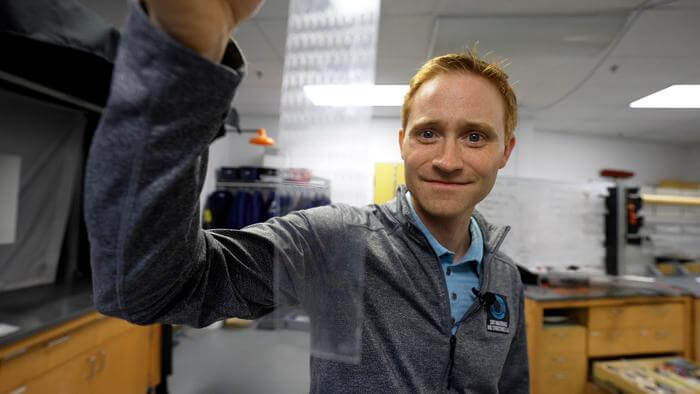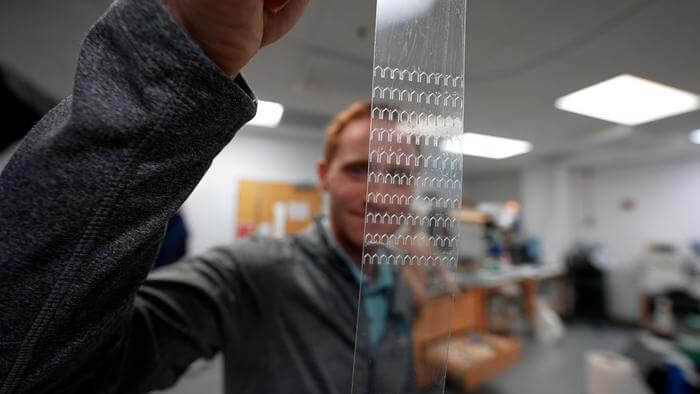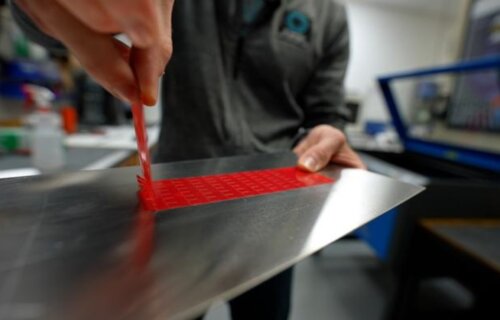BLACKSBURG, Va. — Kirigami, the ancient Japanese art of cutting paper, is now helping modern engineers create a better version of something you’ll find in almost every home — adhesive tape. Using this unique cutting technique, a team at Virginia Tech is amplifying the strength of adhesive tape by 60 times.
Kirigami is a traditional art form and an offshoot of origami, the popular paper-folding technique. The paper is cut as well as folded, resulting in three-dimensional designs that stand away from the rest of the page, without the use of glue.
Adhesive tapes — like duct tape and scotch tape — serve a multitude of functions, ranging from quick repair solution for damaged household appliances to creating a secure seal on a package going out for delivery. However, the application of strong-bonding tape often presents a challenge during removal, typically requiring the user to scrape and pry at the tape’s edges, fervently hoping that pieces of the surface don’t peel away with the tape.

With that in mind, Professor Michael Bartlett’s team at Virginia Tech wanted to investigate whether it was possible to engineer adhesives that are both robust and easy to remove. According to Prof. Bartlett, this seemingly contradictory pairing of traits could revolutionize applications in robotic gripping, health-monitoring wearables, and manufacturing processes for assembly and recycling.
The researcher shared that the development of adhesive tapes began in the 1920s to cater to the needs of automotive painters, who were seeking more sophisticated methods for applying two colors to vehicle bodies. Since the inception of the first masking tapes, Prof. Bartlett notes, a myriad of other variations have entered the market.

Manufacturers have produced “invisible” tape for gift wrapping, electrical tape for insulating wires, and duct tape for an assortment of applications that exceed its original intended use. Under normal circumstances, these tapes peel off in a straight line along the length of the strip until completely removed. Strong adhesives pose greater difficulty in peeling, while reusable adhesives facilitate the separation that limits their strength.
Bartlett’s team hypothesized that if they could control the path of separation, it might be possible to create adhesives that are both powerful and easy to remove. In pursuit of a solution, they turned to the techniques of Kirigami, the 2,000-year-old Japanese art form, to learn how to accomplish it.
The work is described in the journal Nature Materials.
You might also be interested in:
- Edible ‘tape’ ensures your burrito or wrap will never fall apart again!
- Secret Santa, wrapping gifts ranked as the worst parts of the holidays
- Best Easy Origami Designs: Top 5 Paper Folding Crafts Most Recommended For Beginners
South West News Service writer Stephen Beech contributed to this report.

